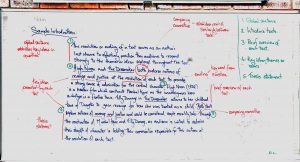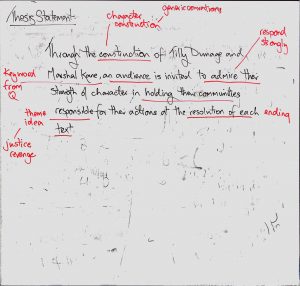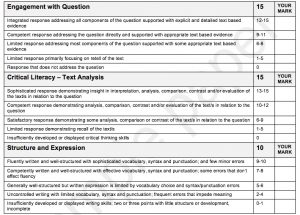The link below will take you to the 2017 ATAR English paper:
https://wace1516.scsa.wa.edu.au/__data/assets/pdf_file/0009/461475/English_exam_2017.PDF
This examination gives you an opportunity to:
- Familiarise yourself with the structure of the examination.
- Explore the examinable content of the course.
- Practice question deconstruction- this is a vital skills which needs attention.
- Prepare formative responses which address areas for development from previous responses.
- Familiarise yourselves with the format and language of questions.
- Practice planning responses to questions (particularly in Section 2) and arriving at focused propositions/thesis statements.
I am more than happy to mark formative (practice) responses and to arrange a tutorial to go through areas for development.
Please also familiarise yourselves with the two documents below:
The assessment table below contains information about the different assessments in Year 12 ATAR English.

The examination brief below gives you information about the structure of the Year 12 ATAR examination:

Your attention is drawn to the syllabus document (also available on the course cover page on SEQTA), particularly the glossary which can be found at the back of this document:
https://wace1516.scsa.wa.edu.au/__data/assets/pdf_file/0003/5754/English-Y12-Syllabus-AC-ATAR-GD.pdf
Finally, a range of resources relevant to ATAR English can be found at:
https://wace1516.scsa.wa.edu.au/syllabus-and-support-materials/english/english2








